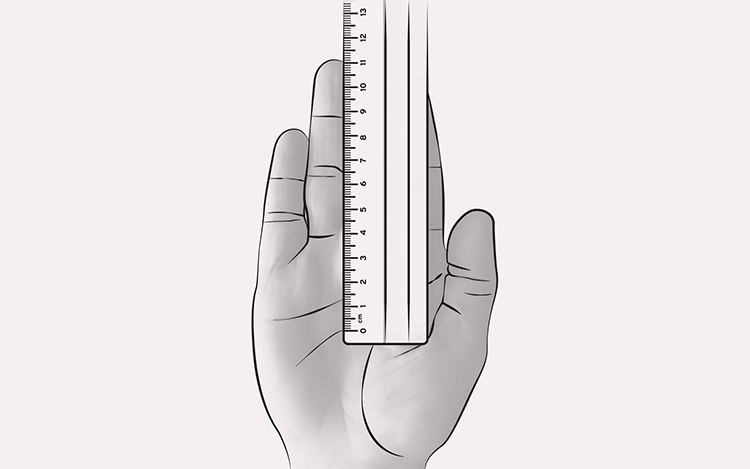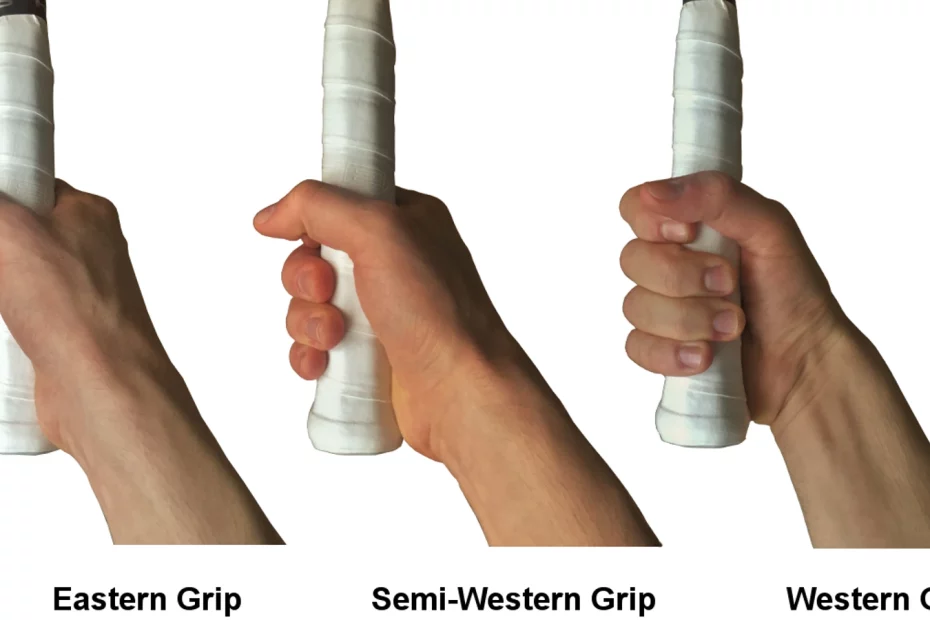Knowing what tennis grips are and what they are used for is an essential part of the game. A tennis grip is just how you hold the racquet, with different tennis grips used for different types of shots. Tennis grips are classified into three types: Continental, Eastern, and Western. At first sight, you may observe that the handle of a tennis racquet is octagonal (8 edges). This is normal for all tennis racquets since it provides both comfort and enough friction to allow you to hold it. Because it is octagonal in design, the sides are known as bevels, which will assist you to decide the type of grip you are employing based on which bevels your fingers are placed on. Let’s Discuss in Detail and Learn how to Measure a Tennis Racquet Grip via Tennis Grips Explained.
How to Find Your Tennis Racquet Grip Size?

- First, take a scale or measuring tape. Then, observe your Dominant playing hand, you will be able to see a lot of many creches and lines on your palm.
- If you observe carefully, you will see 2 prominent lines running parallel to each other, which are the longest and clearly visible. one on the top, one at the bottom.
- Grab your ruler or measuring tape and line it up vertically with your ring finger so that the bottom of the ruler lines up with the top horizontal line in your palm and measure to the tip of your ring finger.

- As you follow the above steps you come to know the measurement of your grip size easily.
- Here in the above grip size, the measurement is around 11 cm i.e 4.330 Inches.
- The above grip falls in the category of Grip Size number 3 in the chart given below.
Universal Grip Size Chart

Types of Tennis Grips
Continental Grip
The Continental grip (also known as the Chopper grip or Hammer grip) is a specialized grip used for serves, volleys, overheads, and slices. If your thumb and fingers form a V across the top of the handle, you’ve got it properly. This grip is the most widely used grip and the most comfortable one. Also Read: Tennis Net Height, Size, and Length
Advantages
- Standard grip for serves and overheads because it allows you to naturally curl your wrist inward after these shots.
- Volleys use this grip because an open racquet face provides both underspin and control.
- The Continental grip, which can be used for both forehand and backhand volleys, allows for rapid shots at the net.
Disadvantages
- Hard to put Topspin
- Low Consistency
Eastern Forehand Grip
For hitting quick and rapid shots, Eastern Forehand Grip is the all-time best. For volleys, the grip can be easily switched from Eastern to Continental. Shots with this grip will naturally be taken at waist level or below it. To produce an Eastern forehand, place your hand flat against the strings and slide down to the handle.
Advantages
- One of the easiest grips for learning forehand.
- Easy to change from an Eastern forehand to a Continental Grip.
- Some topspin
Disadvantages
- Little control on high and fastballs
Eastern backhand grip
The Eastern backhand grip gives both spin and control for a one-handed backhand, and it can be even more versatile if combined with a Western forehand grip, which uses the same grip.
Advantages
- Provides lots of control and the ability to spin the ball.
- Easy to change from an Eastern backhand to a Continental grip for players who enjoy playing at the net
Disadvantages
- No such Disadvantages
Semi Western Grip
The Semi-Western grip has been a popular choice for baseline players because it can generate both topspin and power, which can be very helpful if mastered properly. That is most likely why the Semi-Western grip has surpassed all other tennis grips as the preferred forehand grip. Balls will make contact between the waist and the shoulder. Also Read:10 Best Forehands in Tennis of All-Time
Advantages
- Provides both topspin and power.
- safety and control.
Disadvantages
- Difficult to hit low balls, below the waist level.
Western grip
All other grips are preferred over the Western grip since it is harder to play with consistently, However, it offers the ability to apply extreme topspin to your shots.
Advantages
- Best of all the tennis grips if you want to create a large top spin.
- Balls often bounce high and fast.
Disadvantages
- Very difficult to return balls below waist level.
- Hard to implement on faster surfaces.
Doublehanded backhand grip
Novices Grip is the other name of this grip. The double-handed backhand grip is popular because it gives both stability and control. It is also easier to learn, which is why most novices begin with backhands with two hands. In order to generate power, the two-handed backhand relies heavily on shoulder rotation and a good swing.
Advantages
- Easier to learn than a one-handed backhand
- Provides both stability and control
- Great for low shots
- Best for novices
Disadvantages
- Takes more time to Set-Up
